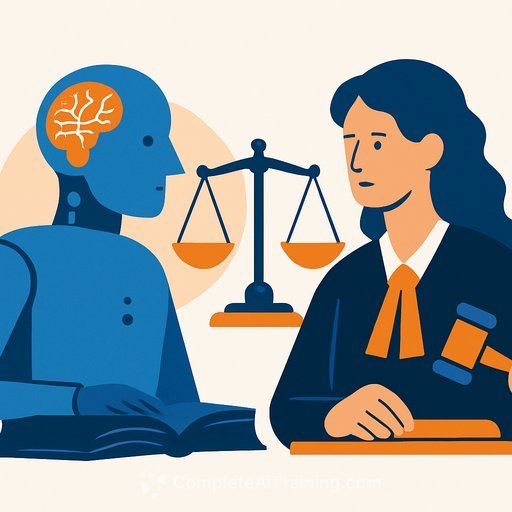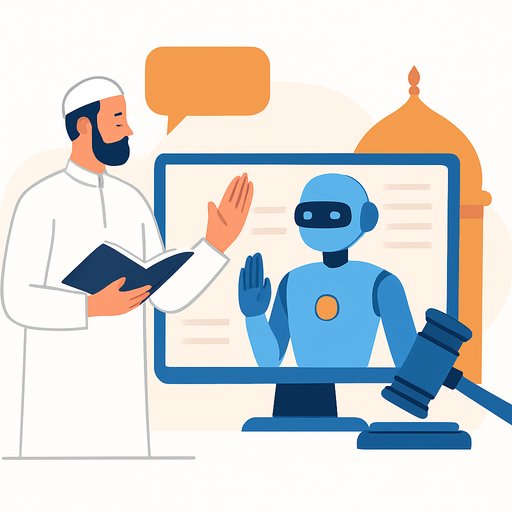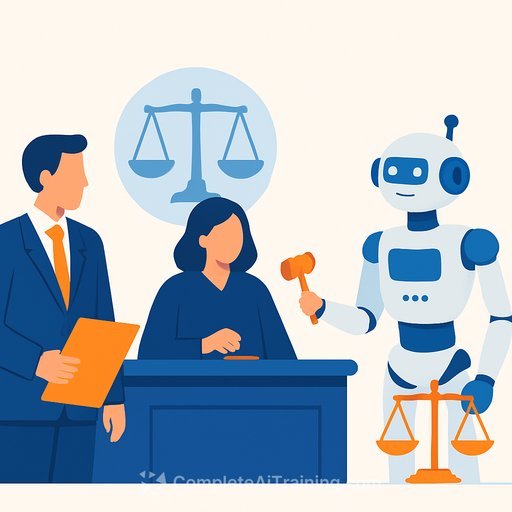Legal AI Should Augment Lawyers-Not Replace Judgment
Legal AI is useful, but treating a chatbot as an oracle erodes core skills. If petitions, plaints, or case summaries are offloaded to a bot, juniors miss the struggle that builds judgment. That tradeoff harms the profession and clients. The tool should assist your mind, not stand in for it.
The Deskilling Risk
LLM mistakes don't look like human mistakes. As Keith Porcaro notes, they are confident, clean, and easy to miss-especially under deadline pressure. Without deliberate safeguards, lawyers can grow complacent and skip the hard thinking. Ethics guidance already warns: you cannot abdicate professional judgment to software.
- Treat AI output as a draft that must be redlined by a responsible attorney.
- Cross-check every citation; read the source, Shepardize/KeyCite, and pin cite.
- Limit AI to routine tasks (proofreading, deduplication, first-pass review).
- Preserve "manual reps": assign juniors periodic research and drafting without AI.
- Log prompts, versions, and approvals to create an audit trail.
Bias, Fairness, and Equal Treatment
AI learns from human data. That means it can repeat and amplify bias-racist, sexist, casteist, religious, or other prejudice. Risk tools have shown higher error rates for certain groups. If those patterns enter legal advice or analysis, they collide with equal protection and professional ethics.
- Demand dataset provenance and bias testing before adoption.
- Run adverse-impact reviews and counterfactual evaluations on outputs.
- Strip proxies for protected traits from inputs and features.
- Require second-chair review (ethics or DEI counsel) for high-stakes use.
Confidentiality and Client Data
Third-party chatbots can expose client confidences. Who controls inputs? Where are logs stored? Without strong contracts and technical controls, privilege and privacy are at risk.
- Use enterprise deployments with data isolation, retention controls, and SOC2/ISO certifications.
- Adopt on-prem or virtual private cloud where feasible.
- Default to redaction and synthetic hypotheticals for sensitive facts.
- Execute DPAs, restrict training on your data, and vet sub-processors.
Misinformation and "Deepfake Law"
LLMs can produce plausible text resting on fake statutes or invented cases. That clogs courts, burdens regulators, and undercuts scholarship. If briefs and bench memos lean on unsourced AI summaries, checks and balances weaken.
- Require source-cited outputs; block filings without verifiable citations.
- Maintain an internal, versioned library of primary sources and treat AI as a pointer, not an authority.
- Adopt verification time in workflows (e.g., a "fact/citation locking" step before filing).
Regulation and Accountability
In the EU, the AI Act classifies AI used in justice as high risk, triggering duties for transparency, human oversight, accuracy testing, and documentation. See the official text for scope and obligations: EU AI Act. The forthcoming AI Liability Directive would expand accountability for AI errors.
India's Digital Personal Data Protection Act, 2023 centers on personal data and leaves algorithmic governance largely untouched. High-risk legal AI can slip through. India needs AI-specific duties: impact assessments, individual audit rights, transparency, and bias controls.
Constitutional principles point the same direction across democracies. Due process requires reasoned, contestable decisions; a black-box model cannot supply the court's reasoning. Any AI that influences bail, sentencing, or liability must be explainable, reviewable, and subject to human accountability.
Professional Duties and Bar Standards
Technology competence now includes competent AI use. The American Bar Association and state bars remind lawyers that duty of competence, confidentiality, supervision, and candor apply to AI. For context, see ABA guidance on technology competence and recent opinions: ABA Professional Responsibility.
- Label when AI was used and keep a record of prompts and outputs.
- Require citations to current law in AI-generated memos and drafts.
- Publish model cards, change logs, and evaluation reports for any in-house tools.
- Establish an "AI Ombudsman" within courts/firms to audit use.
- Invest in publicly owned legal AI models trained on open legal texts.
Where AI Adds Value-With Guardrails
- First-pass document review: clustering, deduplication, privilege screens.
- Draft hygiene: issue spotting checklists, defined-terms checks, style and citation formatting.
- Research acceleration: generate hypotheses and candidate authorities (humans must read the sources).
- Client education: plain-language summaries accompanied by disclaimers and links to primary law.
Team Enablement
Policy beats ad hoc usage. Train lawyers on prompt discipline, verification habits, privacy protocols, and bias awareness. For structured upskilling by role, see curated options: AI courses by job.
Operating Principles You Can Adopt Now
- AI is advisory; a human attorney is answerable for the work product.
- No unsourced claims: every factual or legal assertion must tie to verifiable authority.
- Explainability is mandatory for any AI that influences a legal decision.
- Clients may opt out; disclose AI use and obtain informed consent where appropriate.
- Measure outcomes: track accuracy, bias, and retraction rates; retire tools that miss the mark.
Bottom Line
Legal work is not text autocomplete. Use AI to save time, not to outsource judgment. Keep explanations human, sources verified, and decisions contestable. That is how we protect skill, uphold ethics, and keep justice worthy of public trust.
Your membership also unlocks:






